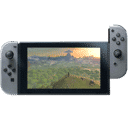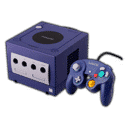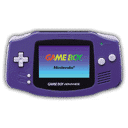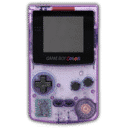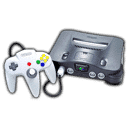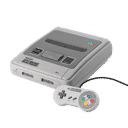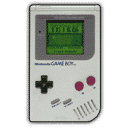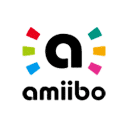
Summary:
Nintendo’s early Switch 2 window now has hard numbers behind the chatter. Mario Kart World—the system’s flagship racer—sold 9.57 million copies through September 30, 2025, while Donkey Kong Bananza reached 3.49 million in the same reporting period. Those figures, disclosed in Nintendo’s investor materials and echoed by specialist press, answer the lingering question about launch timing: yes, putting a new Mario Kart at the front of the line worked. The racer did what racers do best for Nintendo hardware—instantly communicate fun, show off new features with zero learning curve, and invite everyone on the couch to join in. Meanwhile, Donkey Kong Bananza played an essential second lead, giving players a robust single-player adventure with strong word-of-mouth. Together, they helped drive a healthy software attach rate and supported Switch 2’s early hardware pace past 10 million units in roughly four months. Looking ahead, the mix of an evergreen multiplayer anchor and a character-led platformer sets a friendly, familiar rhythm for the holidays: easy to recommend, quick to pick up, and built for repeat nights with friends—exactly the kind of momentum a new system needs.
Why Mario Kart World as a launch title proved the right call
The best launch game isn’t always the prettiest or the most ambitious; it’s the one that sells the console to your friends in a single lap. Mario Kart World fits that bill perfectly. It turns a living room into a lobby in seconds, makes the new system feel fast and inviting, and rewards anyone—newcomers, veterans, and the “I’ll just try one race” crowd. Pair that with the excitement of fresh hardware and you have a powerful loop: people buy the console to race with others, then those same people become the reason more folks want to join. That dynamic is why a kart racer has repeatedly acted like a starter motor for Nintendo platforms. With Switch 2, putting Mario Kart World on day one wasn’t just safe—it was strategic. The game lowers friction to fun, shows off local and online play without fuss, and becomes the default “what should we play tonight?” answer. Once that habit forms, the headline numbers follow.
The numbers: 9.57 million for Mario Kart World, 3.49 million for Donkey Kong Bananza
Sales aren’t vibes; they’re receipts. As of September 30, 2025—the cutoff date for Nintendo’s latest half-year report—Mario Kart World reached 9.57 million units sold worldwide, while Donkey Kong Bananza stood at 3.49 million units. These figures place both games among the system’s earliest million sellers and validate the one-two punch of a mass-appeal multiplayer title plus a character-driven adventure. It also helps that Switch 2 itself cleared roughly 10.36 million hardware units in about four months, creating a solid base to sell into. Reading the data together paints a simple picture: a healthy console launch, a category-defining racer doing heavy lifting, and a Donkey Kong that claimed a meaningful audience alongside it. No guesswork needed—the investor pages and trade coverage align on the same story.
What the IR filings confirm about Switch 2 momentum
Investor documents are the sober counterweight to social buzz, and they lock in three key points. First, early Switch 2 hardware demand beat expectations, with more than ten million units sold by the end of September. Second, software volume stayed lively, supported by new releases and bundles that often accompany fresh hardware. Third, Mario Kart World and Donkey Kong Bananza are explicitly cited as strong performers within that window. The combination of brisk hardware sales and sticky software is exactly what you want in the first months: it signals that buyers aren’t just sampling, they’re playing—and they’re picking the obvious tentpoles that keep living rooms noisy and busy. When both the console and its pack-leading games are trending in tandem, marketing becomes easier and word-of-mouth does the heavy lifting.
Attach rate, bundles, and how to read the figures
Early in a console’s life, bundles can complicate the scoreboard. Nintendo’s own wording clarifies that software totals may include units bundled with hardware, so you should interpret “sold” as consolidated worldwide sales that combine standalone purchases and packaged copies. Does that diminish the achievement? Not really. Bundles still reflect demand—retailers don’t move millions of unwanted boxes—and, crucially, bundled games become play habits. When a racer comes in the box, it’s the first thing everyone tries. Those hours turn into DLC uptake, online play, and an anchor that keeps the console in rotation between big releases. In short: bundles don’t inflate success; they accelerate it. That acceleration explains why Mario Kart World lights up the board so quickly, while a non-bundled adventure like Donkey Kong Bananza can still carve out a strong 3.49 million on its own merits.
Donkey Kong Bananza’s role alongside a juggernaut racer
Stacking a solo-forward platformer next to a social party favorite isn’t redundancy—it’s balance. Donkey Kong Bananza offers a different kind of session: slow mornings with headphones, late-night collectible hunts, and the satisfaction of mastering levels at your pace. After you’ve burned through a few cups in Mario Kart World with friends, a focused Donkey Kong run resets the tempo. That balance matters in a launch window, where a slimmer catalog needs smart variety. Strong reviews and a clear identity—demolition-driven traversal, snappy platforming, and modern presentation—gave Bananza the legs to thrive next to a louder neighbor. The takeaway is simple: when both halves of the audience are served on day one—social and solo—players stick around.
Why kart racing amplifies a new console’s strengths
Kart racers are sales engines because they flex everything a system does well in ways anyone can feel. Instant loads? You’re back on the track before the laughs fade. New controller quirks? They translate into playful steering and party chaos. Online stability? You’re pairing with friends without a lesson. Mario Kart World packages all of that into two-minute slices that showcase the console’s responsiveness and makes the “just one more” loop irresistible. It’s also infinitely demo-able: one race convinces a visitor that they need to bring this home. Add evergreen updates and seasonal events and you have a platform inside the platform—a dependable heartbeat for the library that keeps people engaged while new releases rotate in.
Early hardware trajectory and the ripple effect on software
When a system clears eight figures of hardware in roughly a fiscal quarter, the opportunity surface for software expands fast. Retailers dedicate more shelf space, digital stores feature more showcase slots, and public perception flips from “wait and see” to “I don’t want to miss out.” That sentiment fuels not just the headliners but the second tier that lives in their glow: party compilations, family puzzlers, and mid-budget action games. For Mario Kart World and Donkey Kong Bananza, that rising tide means a broader audience cycle—new buyers keep picking up the racer to play with friends, and a steady stream of players sample Donkey Kong when they’re ready for a single-player change of pace. Momentum compounds when the library speaks to different moods without asking for homework.
Multiplayer, couch co-op, and evergreen replay loops
Launch windows favor games that turn “having friends over” into an activity without planning. Mario Kart World nails that by being frictionless: pick a track, pick a kart, and you’re laughing at someone’s missed drift. The evergreen hook is that every session feels different—a rogue shell, a perfect mushroom chain, a last-corner upset. That unpredictability keeps the game lively months later, so even as new releases land, the racer remains the reliable crowd-pleaser. Donkey Kong Bananza adds the counterweight: a structured campaign that you can chip away at solo or pass the controller back and forth. The two together create a weekly rhythm that supports the console long after the launch day excitement fades.
Holiday window expectations and stock planning realities
Heading into the holidays, two dynamics usually matter most: supply and simplicity. When inventory is healthy, the recommendation ladder is straightforward—“Get Switch 2, grab Mario Kart World, you’ll be set for parties, and Donkey Kong Bananza if you want an adventure.” That clarity turns into sales because it lowers decision fatigue for gift buyers and gives everyone an easy starting point. With Nintendo signaling strong momentum in its filings and the press underlining the console’s pace past 10 million units, the conditions look favorable for a festive bump. Even if hardware demand spikes in November and December, the presence of two proven sellers makes every bundle or store endcap feel like a complete package rather than a scavenger hunt.
What this means for 2026 releases and Nintendo’s roadmap
A fast start reshapes the next twelve months. Publishers want in on a platform that’s already in living rooms. For Nintendo, the data encourages a steady cadence built around a dependable core: keep the multiplayer tentpoles fresh with updates and events, rotate in one or two major character adventures across the year, and use the gaps to spotlight inventive mid-scale projects. Mario Kart World and Donkey Kong Bananza have shown there’s an audience ready now—not someday. That confidence typically leads to clearer roadmaps, more aggressive marketing beats, and a healthy spread of genres. For players, that translates to fewer dry spells and more “oh, that’s out this month” surprises.
How perception caught up with reality
Before the numbers arrived, the debate was familiar: was Mario Kart World too safe for a launch? The results made that worry feel quaint. The racer proved its worth in the clearest possible terms—by being the game people actually play most—and the companion platformer proved that a bold character outing can flourish beside it. The broader lesson is that first months are about confidence: the confidence to invite friends over, to splurge on an extra controller, and to believe that the system you just bought will keep your weekends busy. Sales milestones didn’t create that confidence—they reflected it.
The simple playbook for new buyers
If you’re picking up Switch 2 now, the plan writes itself. Start with Mario Kart World to get everyone smiling in ten minutes. Add Donkey Kong Bananza when you want a solid solo or couch-pass platformer that feels punchy and modern. Keep an eye on official updates and seasonal events to rekindle interest during quieter weeks. That pairing holds up because it covers both sides of how people really play: loud sessions with friends and quiet nights with a controller and a drink. With more releases lining up for 2026, you’ll have reasons to branch out—but the backbone is already here.
Reading beyond the headline numbers
There’s a temptation to treat every figure as a contest, but context matters more than victory laps. Mario Kart World hitting 9.57 million is made even more meaningful by how quickly it happened and how naturally it fits into daily routines. Donkey Kong Bananza’s 3.49 million showcases strong adoption for a single-player adventure launching a month and a half after hardware. And Switch 2’s hardware crest north of ten million creates a rising base for everything that follows. Together, those facts explain why expectations for the fiscal year’s software were revised upward: when big games are sticky and the console’s install base climbs in sync, projections move accordingly. That’s not hype; that’s arithmetic.
Why this launch will be remembered
Launch windows tend to blur together years later, but every so often one lands with clarity. Switch 2’s opening stretch—with a new Mario Kart as the social default and a confident Donkey Kong right behind it—feels like one of those stretches. The numbers are neat because they put a pin in the memory; the experiences are what keep those pins in place. In a few years, people will remember the living rooms, the laughter, and the race you stole on the last corner. They’ll remember pulling loose blocks from a Bananza wall and discovering a hidden passage. And they’ll remember that these were the games that made the console feel inevitable.
Conclusion
By the end of September 2025, the discussion shifted from “Was this the right launch strategy?” to “How fast can they build on it?” Mario Kart World’s 9.57 million and Donkey Kong Bananza’s 3.49 million tell a simple story: pick approachable fun for day one, pair it with a standout adventure, and let the audience do the rest. With Switch 2 hardware past ten million and momentum heading into the holidays, the foundation is set. The next chapter is about cadence—keep the racer lively, give Donkey Kong’s audience more to chew on, and welcome the 2026 lineup into a living room that’s already wide awake.
FAQs
- How many copies has Mario Kart World sold so far?
- As of September 30, 2025, Mario Kart World has sold 9.57 million units worldwide according to Nintendo’s investor pages and corroborating coverage.
- What about Donkey Kong Bananza?
- Donkey Kong Bananza reached 3.49 million units sold in the same reporting period, reflecting strong demand for a character-driven platformer alongside the flagship racer.
- Did bundles influence the totals?
- Nintendo notes that software sales can include units bundled with hardware. Bundles help establish play habits quickly and are typical in early console lifecycles.
- How is Switch 2 hardware performing?
- Nintendo reports roughly 10.36 million hardware units sold through the end of September 2025, signaling a fast start and a healthy base for software.
- What does this mean for the holidays?
- With an easy recommendation set—Mario Kart World for parties and Donkey Kong Bananza for solo sessions—the platform is positioned for a strong holiday window as stock and visibility increase.
Sources
- Top Selling Title Sales Units (Mario Kart World 9.57M; Donkey Kong Bananza 3.49M), Nintendo IR, November 4, 2025
- Dedicated Video Game Sales Units (Hardware/Software totals as of Sept. 30, 2025), Nintendo IR, November 4, 2025
- Financial Results Explanatory Material (First Half FY2025), Nintendo IR, November 4, 2025
- Nintendo Switch 2 and Switch million sellers for November 2025 – Donkey Kong Bananza at 3.49 million units, more, Nintendo Everything, November 4, 2025
- Nintendo’s Sold Over 10 Million Switch 2s, Twice As Fast As The PS5, Kotaku, November 4, 2025
- Nintendo Switch 2 surpasses initial Sony PlayStation 5 sales with Mario Kart World its most popular game, NotebookCheck, November 4, 2025


